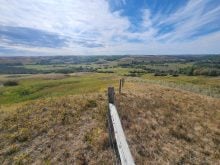NISKU, Alta. – Farmers shouldn’t let snide asides from their neighbors prevent them from switching to zero till, say two proponents of the conservation technique.
While some snicker about dirty fields cluttered with chaff and stubble, Ken Eshpeter said more farmers must look past the appeal of pure black land and focus on the bottom line.
“A lot of people, when they drive by (my fields), they ask ‘What is that farmer doing?’,” Eshpeter told 40 delegates at Earthkeeping’s annual convention at Nisku, Alta., Nov. 27.
Read Also

Pakistan reopens its doors to Canadian canola
Pakistan reopens its doors to Canadian canola after a three-year hiatus.
“The benefits far outweigh the ‘tsk’ factor.”
He said most zero-till farmers disturb the land less than other farmers because they understand more about the fragile ecology in their soil.
“There is a trend to less and less tillage,” said Eshpeter, who rotates canola, wheat, barley and peas on 1,200 acres of clay-loam soil near Daysland, Alta.
Most producers are daunted about buying new equipment without a guarantee of success, he said.
“I don’t think a lot of farmers are that skeptical of the process any more. Most of them are reluctant to get in because they don’t exactly know what machine to get.”
Eshpeter rigged some homemade modifications to a 32-foot John Deere air seeder.
“You can spend a lot of money on a machine and that doesn’t mean you will be a successful no-tiller. What they are going to have to do is choose some kind of a system, do it on a field-scale basis for a while and maybe watch and then refine their own opener system.”
Farmers considering a switch to no-till need not worry about higher herbicide costs, said Eshpeter.
“When we disturb the soil, we stimulate weeds to grow,” said Eshpeter, who won the 1997 Family Farm Conservation Award from the Alberta Conservation Tillage Society.
“My chemical costs are not any higher (than conventional tillers) right now and eventually I think they will get lower as I get better at it.”
The stubble snubbed by some farmers also protects the land from wind and soil erosion.
Harvey Brink converted to zero till in 1994, after going through a partnership split with his brother.
Lowered input costs of $15 per acre lured Brink to zero till, but he sees other benefits beyond the bottom line.
“God gave us us rich land and we have a responsibility to take care of it,” said Brink, who crops 1,000 acres with wheat, barley, canola and peas near Bentley, Alta.
The conservation benefits of zero till include better water infiltration and protecting the soil from erosion, said Brink, who said he also saves fuel and fertilizer.
While stubble-covered fields produce some skepticism, Eshpeter predicted conventional tillage will be laughed about in the 21st century.
“I have no doubt that within another 15 or 20 years, that a large part of the Prairies will be no-tilled, or certainly minimally disturbed.”














